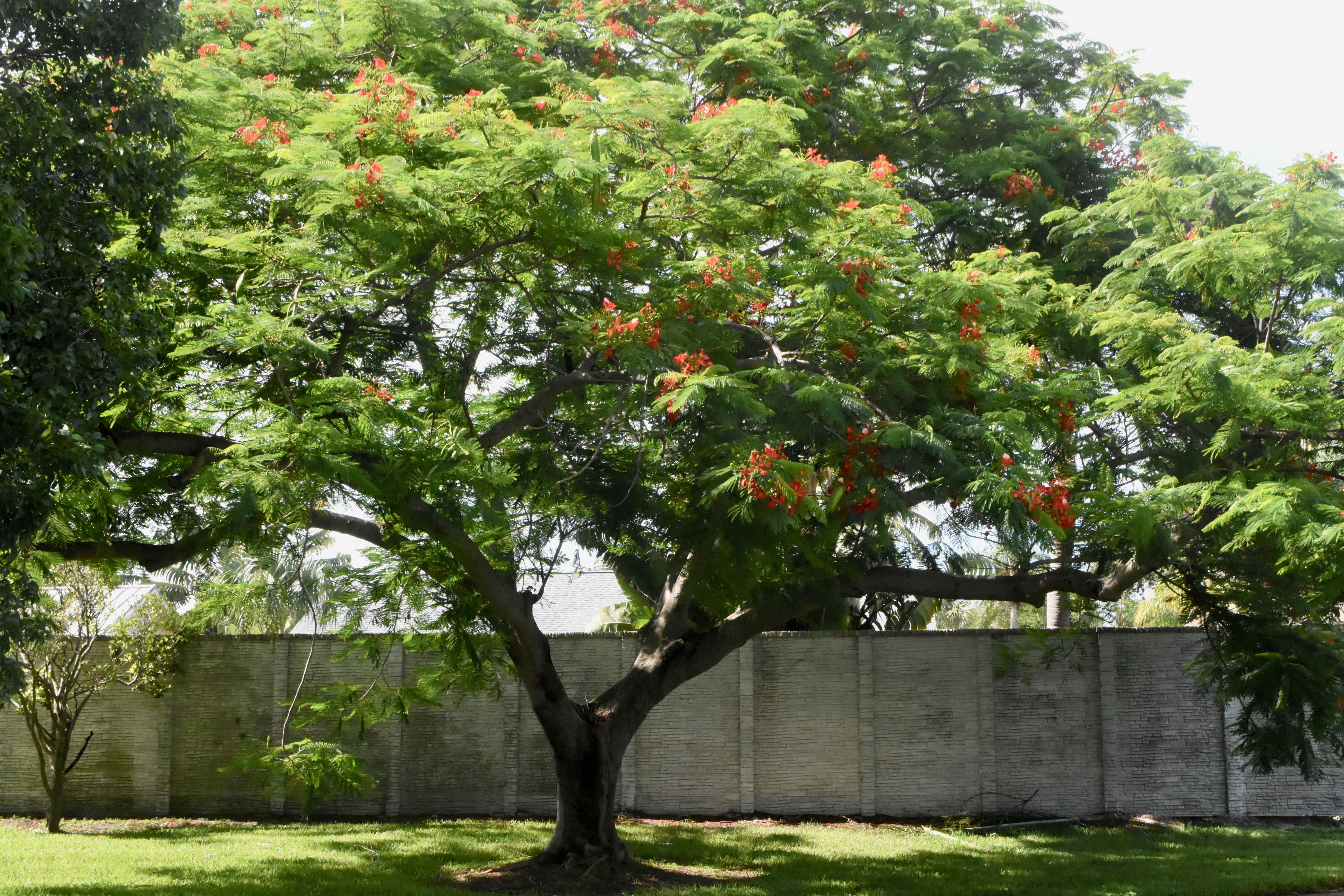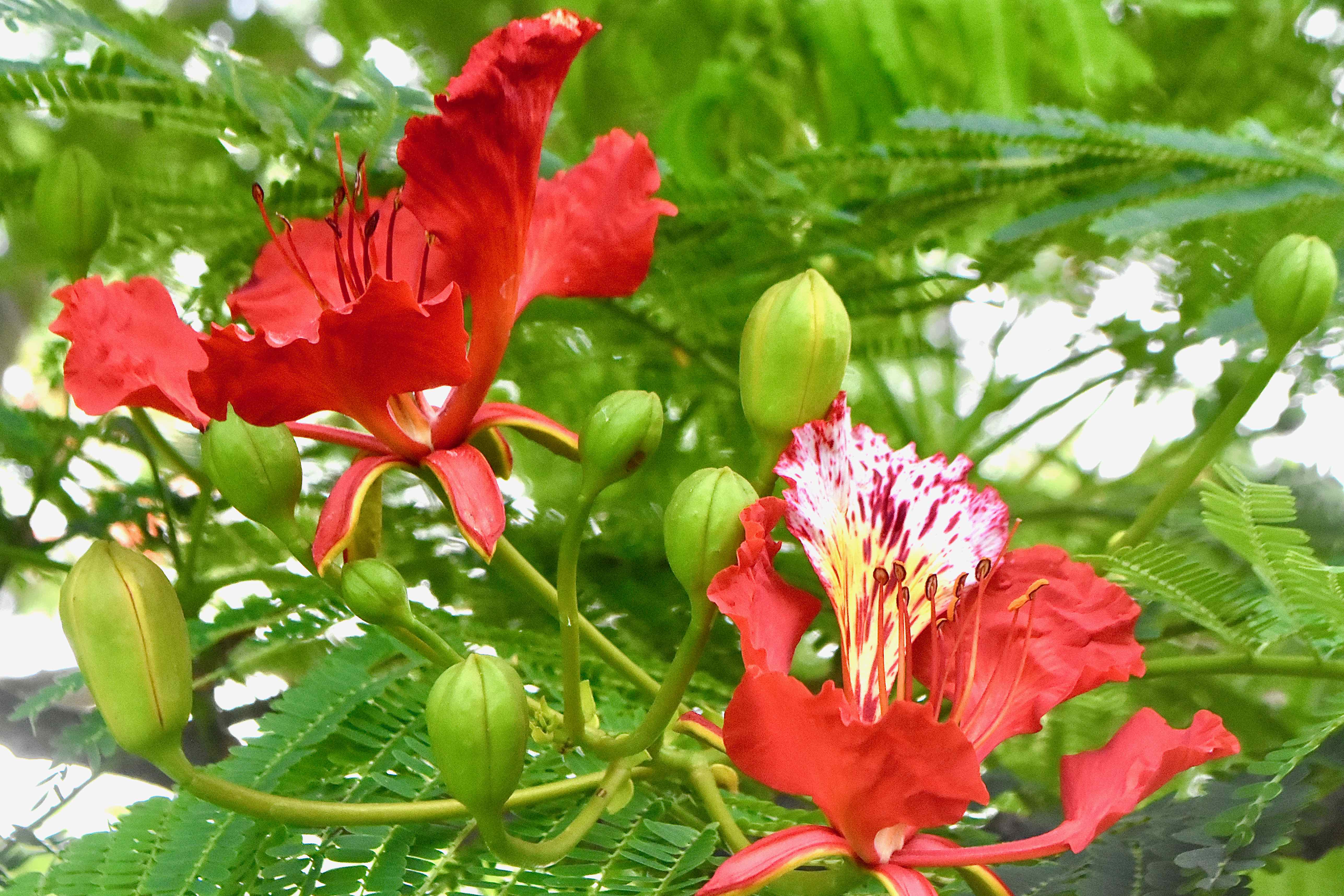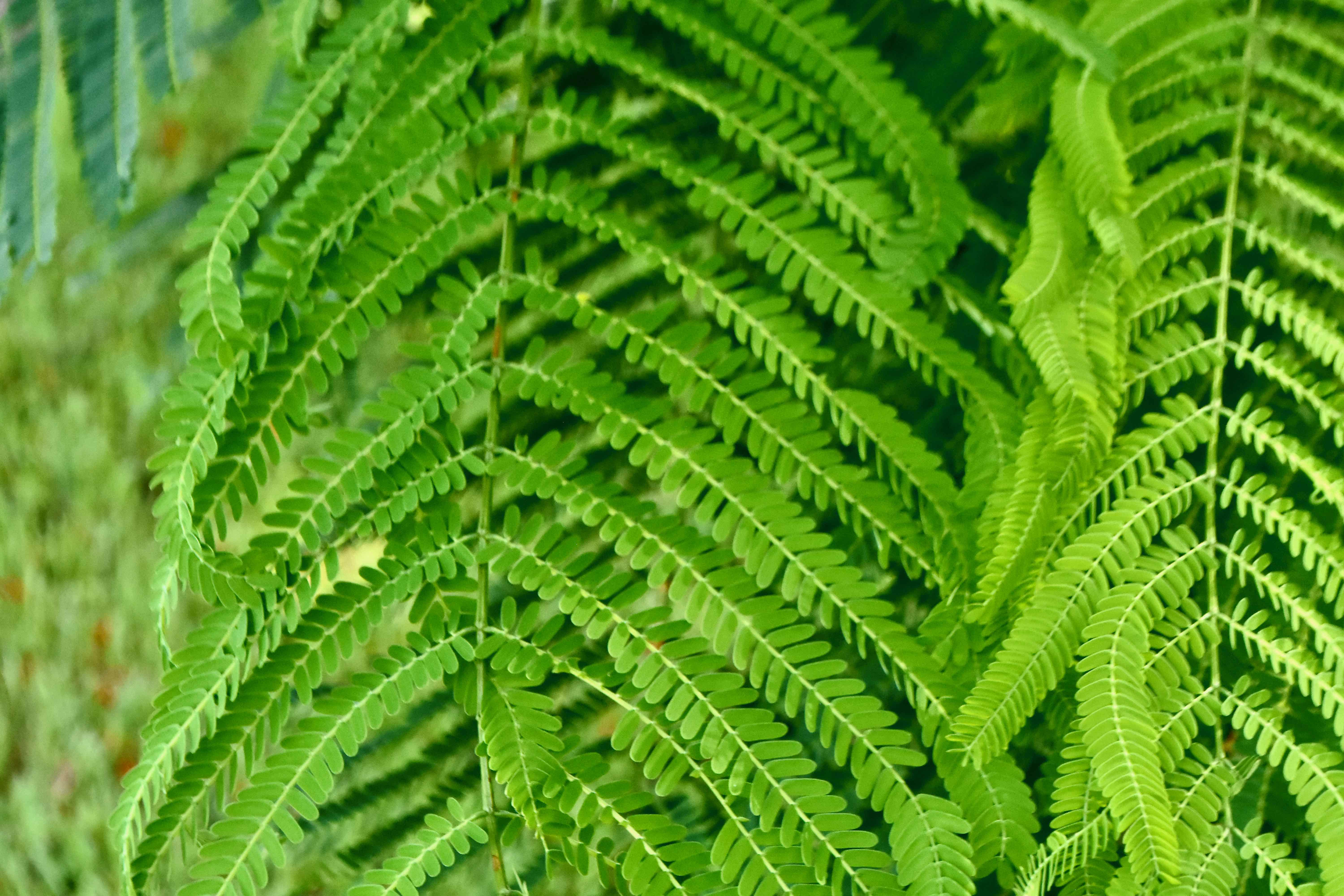
Royal Poinciana, photographed at Mike Machek Boy Scout Park, Delray Beach, Palm Beach County, in July 2019.
It's easy to see why royal poinciana, Delonix regia, is among the most popular landscaping trees in South Florida. For one, there might not be a tree more beautiful anywhere on the planet than a royal poinciana in full bloom. For another, it's an incredible shade tree with its broad canopy and dense foliage.
The royal poinciana is so ubiquitous that it's hard to imagine South Florida without it. It's so common one might think it's a Florida native. It's not. Believe it or not, It actually hails from Madagascar. Its amazing good looks have made it a valued tree in just about every tropical or subtropical place around the globe. But in some places, it's a pesty tree.
It's hard to say when the first royal poinciana took root in South Florida, but famed botanist and plant explorer David Fairchild is said to have advocated for the tree to be planted in Miami's public spaces more than a century ago. According to the story, his wife, Marian, planted one in their yard in 1917. The trees rapidly became accepted as part of the South Florida scene. So accepted that a Royal Poinciana Fiesta was organized in South Miami and Coral Gables in 1937. It's now the oldest festival in South Florida — the 82nd annual Royal Poinciana Fiesta was held in June 2019. Key West declared the royal poinciana to be the official city tree in 2018.
It's a native of Madagascar's dry forests, but it's ability to handle weather extremes is a key to its success here in South Florida. It can tolerate both winter-spring dry season and the summer-fall rainy season. However, it does not handle sustained flooding well and it is not cold-tolerant at all, which limits its range. Range maps limit it to Broward, Collier, Miami-Dade and Monroe counties, but it is common in Palm Beach County as well.
The brilliant red-orange flowers make the royal poinciana easy to identify when the tree is in bloom, from late spring into the fall. They can literally cover the tree. The flowers are large, as much as five inches across, with five spoon-shaped petals and five sepals. Four of the petals are one size; the fifth, called the standard, is slightly larger than the others and can be mix of reds, oranges and whites, which attracts pollinators.
The flowers give way to large, pea-like pods that turn from green to dark brown as they mature. The pods can be a couple of inches across and as long as two feet. When ripe, the pods split open and fall to the ground, but the seeds remain inside. The seeds are about three-quarters of an inch across, and can remain viable for as long as three years, waiting for the perfect conditions for germination.
Royal poinciana leaves are feathery, almost fern-like. They are bipinnate, or double compound. Each leaf has 10 to 20 pairs of leaflets, which in turn has 25 to 35 pairs of secondary leaflets (see the photo below at the bottom right). The tree is semi-deciduous, meaning it drops most, but not all, of its leaves come winter.
The bark is gray and smooth. The trunk splits into multiple branches a short distance off the ground. Which brings us to the royal poinciana's first negative characteristic: the wood is brittle and the tree itself doesn't handle hurricanes well. That's a big minus here in hurricane alley, which experts say can be minimized by prudent pruning.
The tree's roots extend above the ground and will damage any paved surface be it concrete or asphalt. Experts recommend that royal poincianas be planted at least 10 feet from any pavement; some say the minimum should be 15 to 20 feet. And those seed pods don't decompose and need to be raked up.
Royal poincianas can be absolutely huge. They can be 50 feet tall with a crown twice that, though more typically 25 feet tall with a 50-foot spread. The Florida champion tree, in Hendry County, is 80 feet tall, with a 66-foot spread. Royal poinciana's wide spread makes it impractical for smaller spaces.
Beauty and shade aren't the only things royal poinciana has to offer. The bark has medicinal properties, and has been used to treat diabetes and as an anti-inflammatory and anti-oxidant. It also has properties that could prevent liver damage. The gum it produces is used in the textile and food industries.
Despite its beauty, royal poinciana is considered an invasive pest in Australia, Cuba and several Pacific island groups, including Hawaii and the Galapagos. The Florida Exotic Plant Pest Council doesn't consider it as an invasive, but the staff of Biscayne National Park does.
Other names include: flamboyant tree, flame tree and peacock tree. It is a member of Fabaceae, the pea family.
Click on photo for larger image
Links for Royal Poinciana



